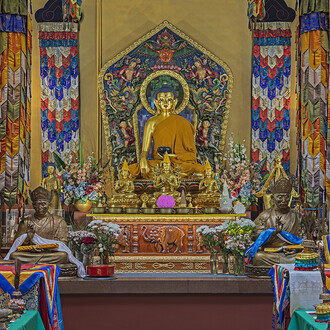On display are the archaeological finds from the various regions of the Caucasus covering a period from late 2nd – early 1st millennium B.C. until the 8th – 9th centuries, including the cultural artefacts of the ancient state of Urartu of the 9th - 7th centuries B.C. and the unique archaeological finds from the burial ground (8th- 9th centuries) in the ravine of Moshchevaya Balka in the Northern Caucasus.
The exhibition opens with the archaeological finds (the late 2nd millennium –1st millennium B.C.) from the various regions of Southern Caucasus. The next room is devoted to the culture of the ancient state of Urartu (9th – 7th centuries B.C.) situated on the territory adjacent to lakes Van, Urmia and Sevan. The majority of items date from the 8th and the 7th centuries B.C. and originate from the ancient city of Teishebaini, where the archaeological expedition led by B.B. Piotrovsky from 1939 until 1971 carried out excavations under a hill at Karmir Blur.
Of particular interest are the bronze figurines of fantastic creatures, which came from the ancient city of Rusakhinili (present-day Toprakkale). A separate gallery exhibits the unique archaeological finds from the burial ground of the 8th and the 9th centuries located on the high-mountain terraces in the ravine of Moshchevaya Balka in the Northern Caucasus. It includes a unique collection of fabrics, pieces of clothing, objects made of wood and leather, remarkable for their state of preservation.
















